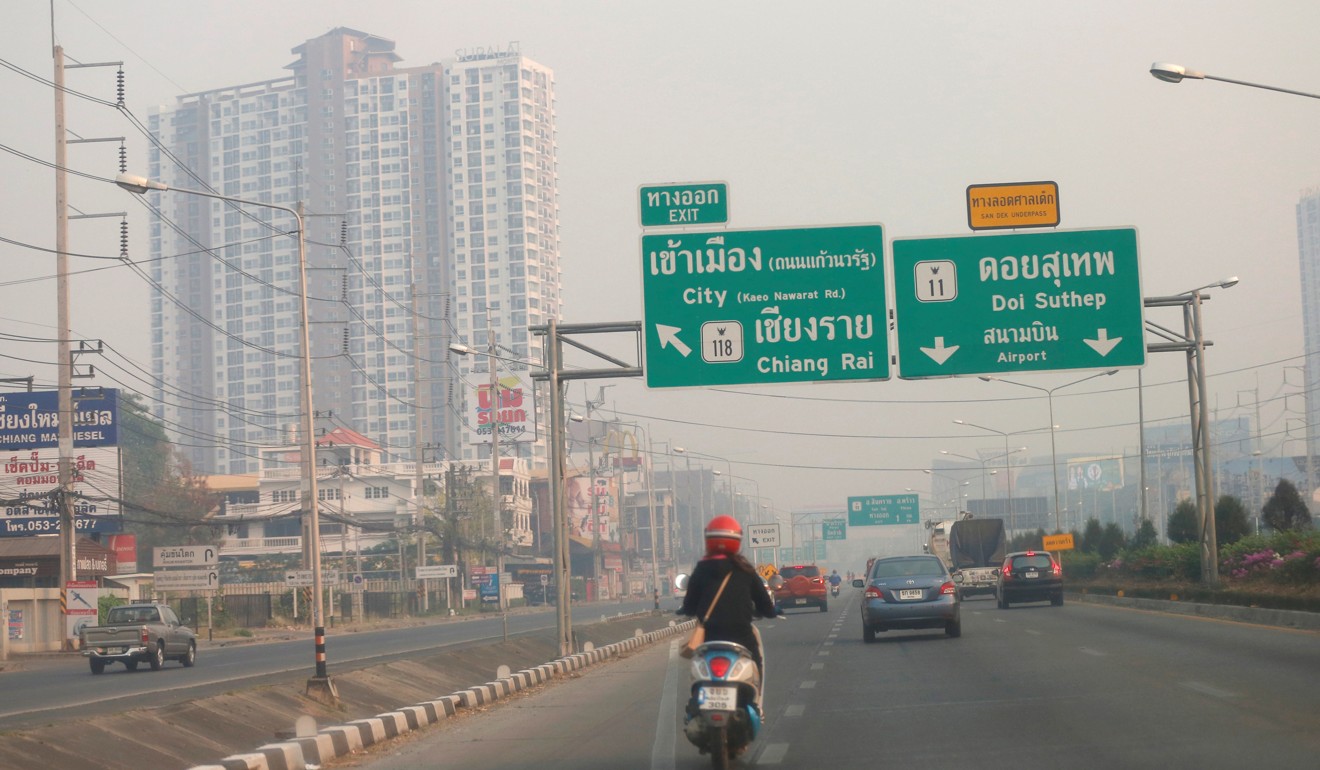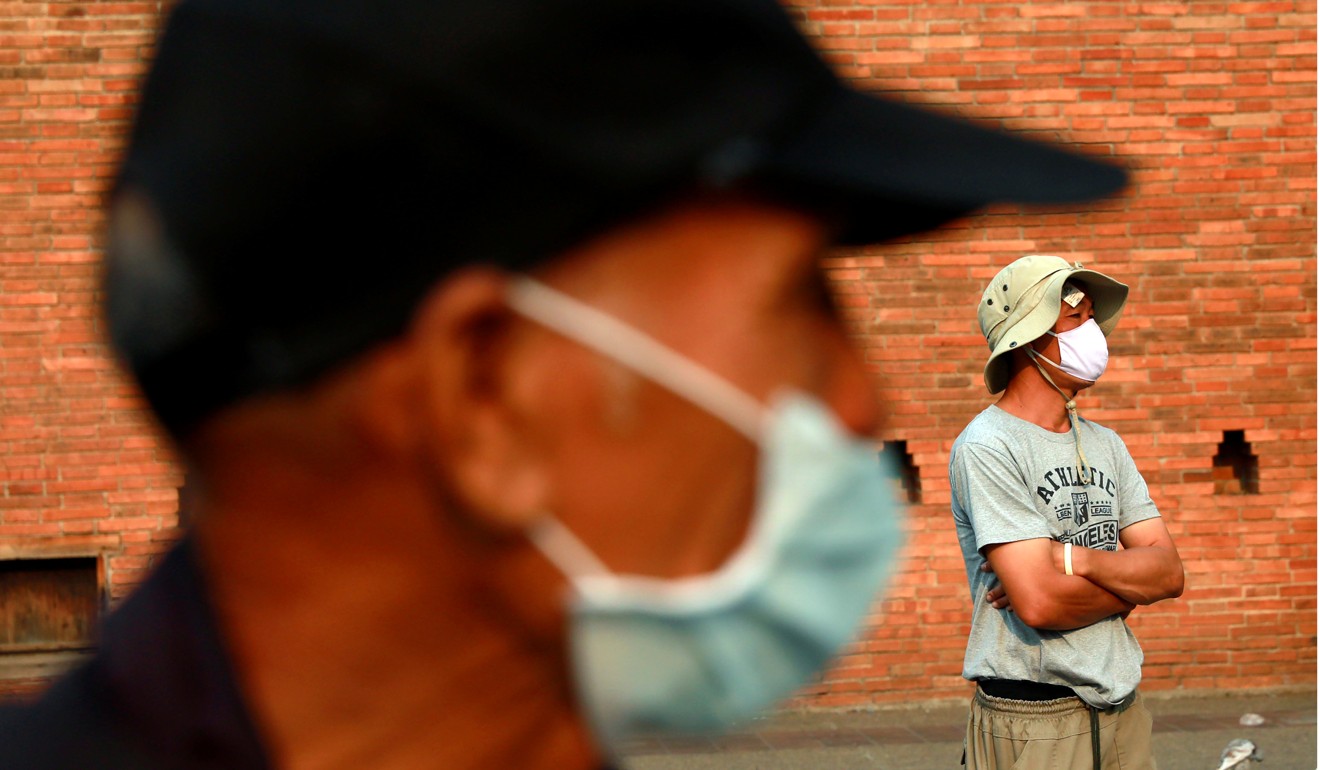
Thick smog leaves Chiang Mai’s Songkran Thai New Year celebrations a damp squib
- For more than a month, the northern Thai city and its neighbouring provinces have been shrouded in smog
- Hotel occupancy rates have suffered, with tourists cancelling bookings and changing their travel plans to holiday further south

Swankiri is a brand-new secluded mountain resort just 30 minutes from downtown Chiang Mai, the largest city in northern Thailand. It opened last November and all of its 16 rooms were fully booked for the first few months of operations. But this month, it will welcome no visitors at all.
“There have been cancellations,” said Rut, one of the hotel’s managers. “But maybe [it’s also] because we are new and have not promoted the place that much.”
For more than a month, Chiang Mai and its neighbouring provinces along the borders with Myanmar and Laos have been shrouded in heavy smog caused by man-made forest fires. As of Sunday, Chiang Mai’s air quality measured 174 on the air quality index, indicating “unhealthy”, compared to 56 in Bangkok. The pollution has put many off visiting what many see as one of Thailand’s most beautiful tourist destinations.

The scale of the northern smog crisis has also affected traditional Thai New Year celebrations, known as Songkran, which run until Tuesday. In the northern part of the country, the festival is usually extended into a week-long event filled with religious rites and international crowds who come for the notorious water fights.
But in Chiang Mai this year, tourists do not seem to want to stay too long. Panlop Saejew, vice-president of the city’s chamber of commerce, said the overall hotel occupancy rate in Chiang Mai during Songkran this year was “below expectations”.
“Duangtawan, a hotel in downtown Chiang Mai, reported full occupancy on April 13, but one or two days later the occupancy [rate] was down to 60 per cent, which means tourists [have] shortened their stay,” Panlop said.
“Accommodations in the city with relatively good marketing can sustain themselves. But the overall number of tourists is not enough to sustain smaller resorts or guest houses.”
Despite the pollution, celebrations went ahead at Tha Phae Gate in Chiang Mai with revellers turning the area into the scene of a giant water fight over the weekend – though a water-gun seller did tell local media that her business had been affected by a lack of tourists.
About 546,000 foreign tourists, 8 per cent more than last year, are expected to have visited Thailand during the week-long Songkran festival, including an estimated 150,000 Chinese.
Foreign visitors, combined with some 3 million domestic travellers, are expected to have generated more than 20 billion baht (US$629 million) in revenue during the event. Thailand’s tourism authorities are targeting growth in tourism revenue this year of 10 per cent – to 3.4 trillion baht, up from last year’s 2 trillion baht.

Other parts of Thailand have benefited from tourists re-routing from the polluted north. Kongsak Kookongsakorn, head of Thailand’s Southern Hotels Association, said the northern smog had led to last minute bookings in the southern island of Phuket by tourists from Asia and further afield. “There was 50-60 per cent hotel occupancy in the beginning of April but a week before Songkran, the occupancy rose to 80 per cent,” he said.
He added that Phuket had not fully recovered from the ferry tragedy last July in which 47 Chinese tourists were killed. Chinese group tours, which had become a familiar sight in the city in recent years, have largely disappeared. Individual travellers from the Chinese mainland were still visible, but Kongsak did not expect there to be more this year. “The number of Chinese tourists frequently saw around 10 to 20 per cent growth every year. But there was no growth last year, and probably also this year.”
An estimated 2.19 million Chinese visited Phuket last year, up from 1.82 million the year before. Overall, 10.5 million Chinese visited Thailand in 2018. The 2019 target is 12 million.
Travellers visiting Thailand for Songkran often stop off at Ayutthaya, a World Heritage Site of temple and palace ruins about an hour from Bangkok. Its annual Songkran celebration is famed for the elephants that scoop up water with their trunks before dousing visitors.
Ittiphan Khaolamai, a manager of one of the province’s elephant sanctuaries, said he wanted to see tourists extend their stay, especially “Chinese tourists from the mainland who come on charter flights”.
“We receive about 3,000-5,000 of them a day on average as they come to take pictures with the elephants before returning to Bangkok. We only have 25 elephants for the tourists to ride so we cannot cater to them all,” he said.
Meanwhile, Bangkok has been celebrating a downsized Songkran festival with two major sites holding water fights: Khaosan Road, a backpackers’ haven minutes from the Grand Palace, and the business district of Silom.
Concerts and performances at both sites are banned this year for the first time, as the capital prepares for the coronation of King Maha Vajiralongkorn, which is set for May 4-6.